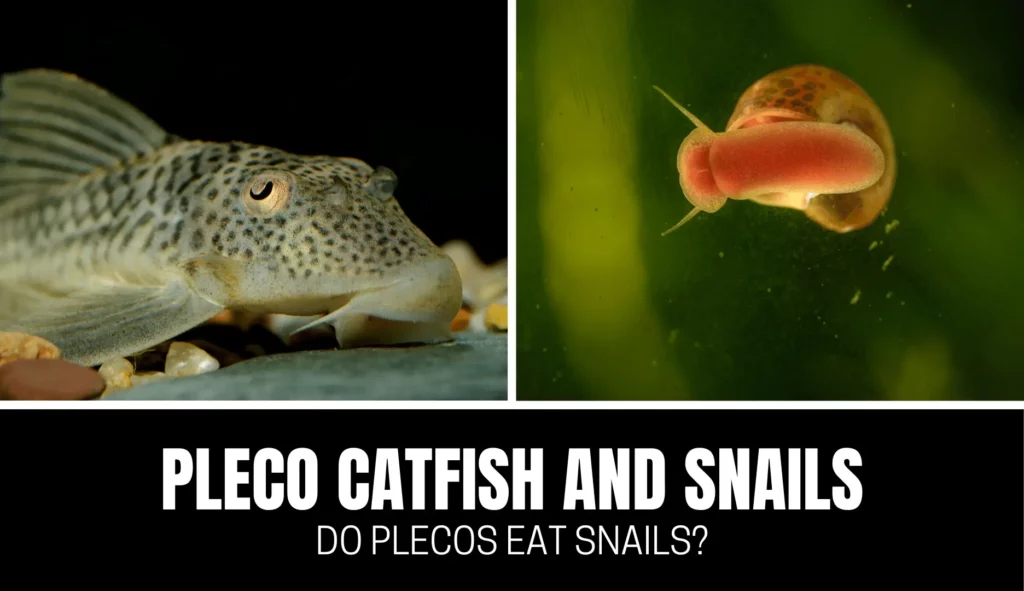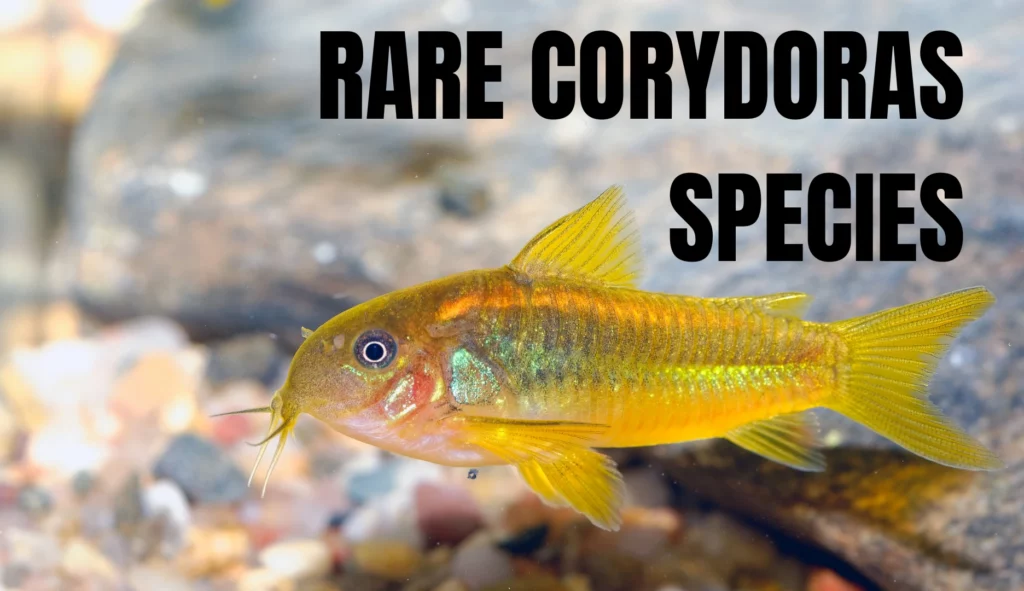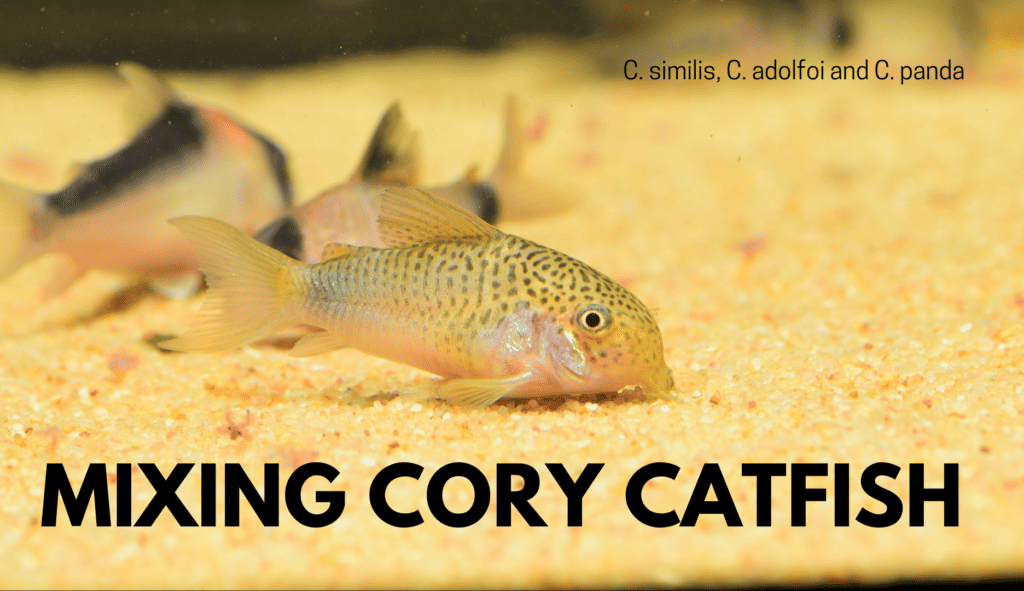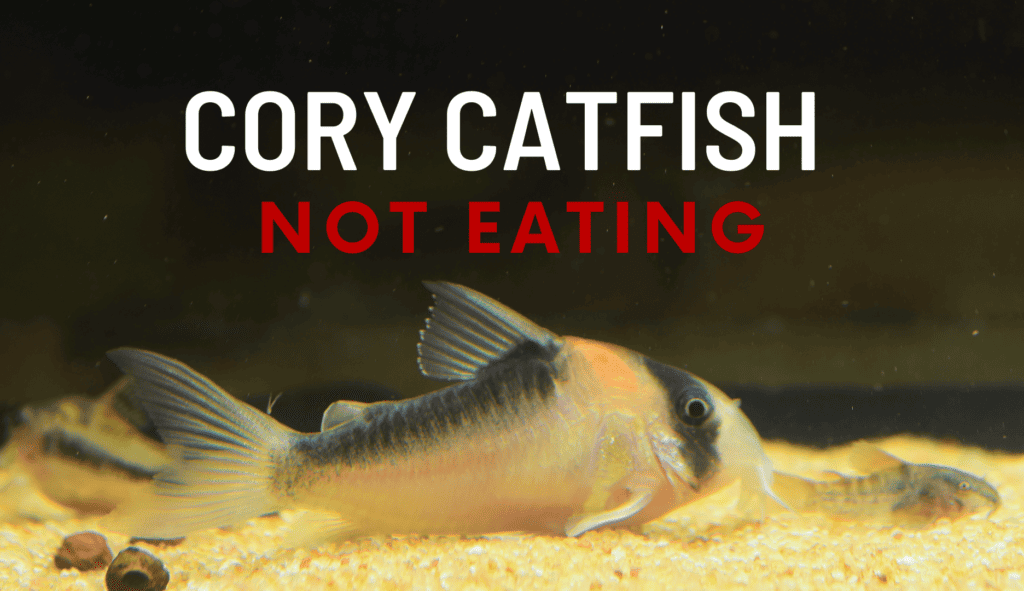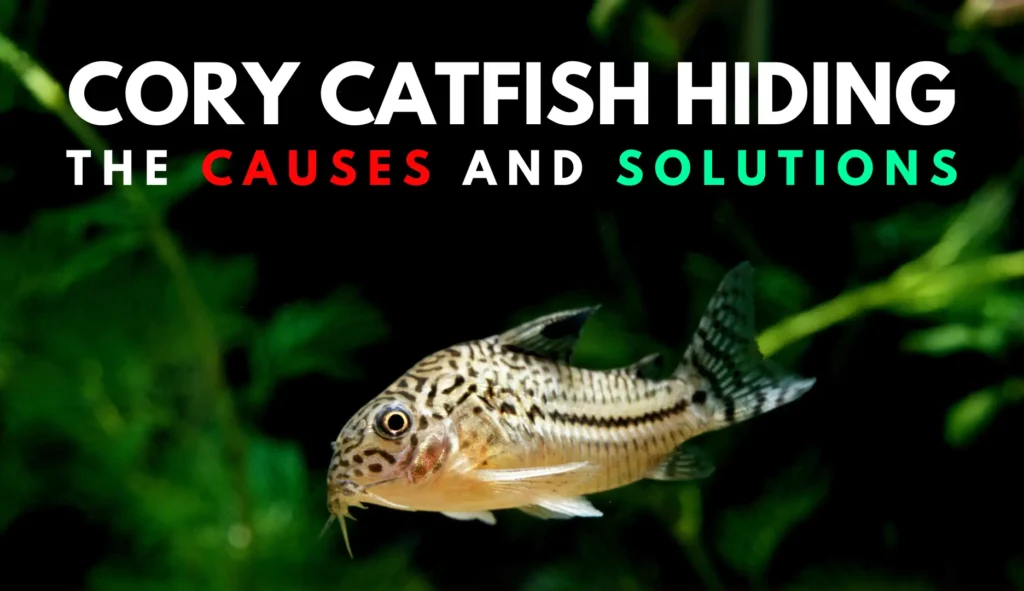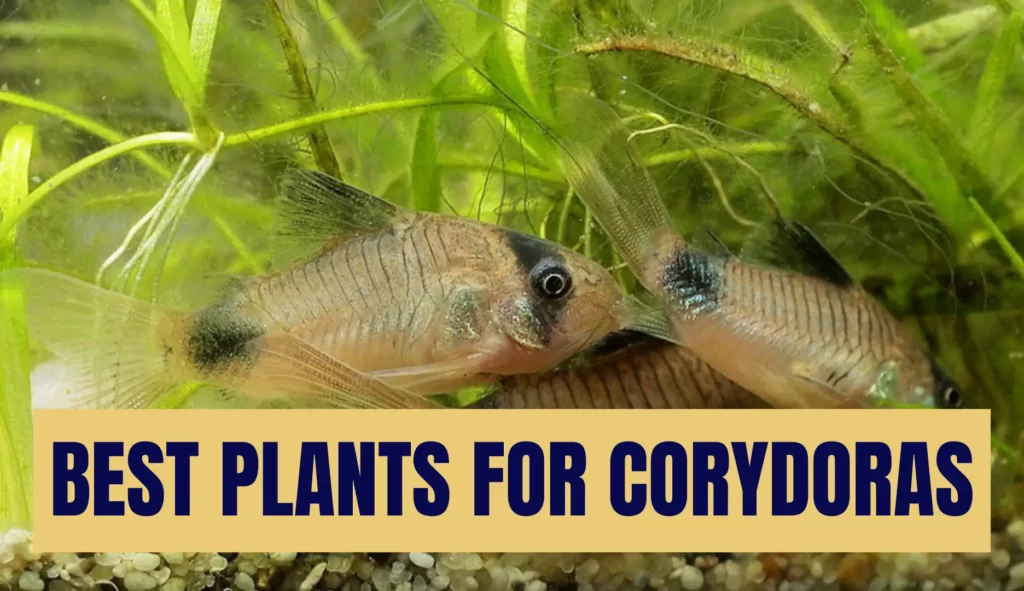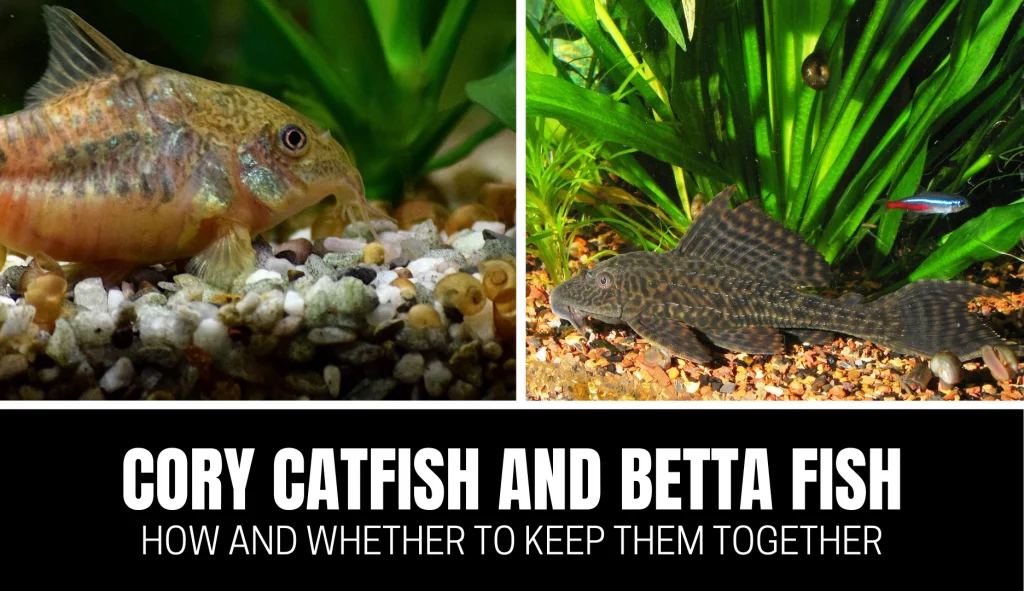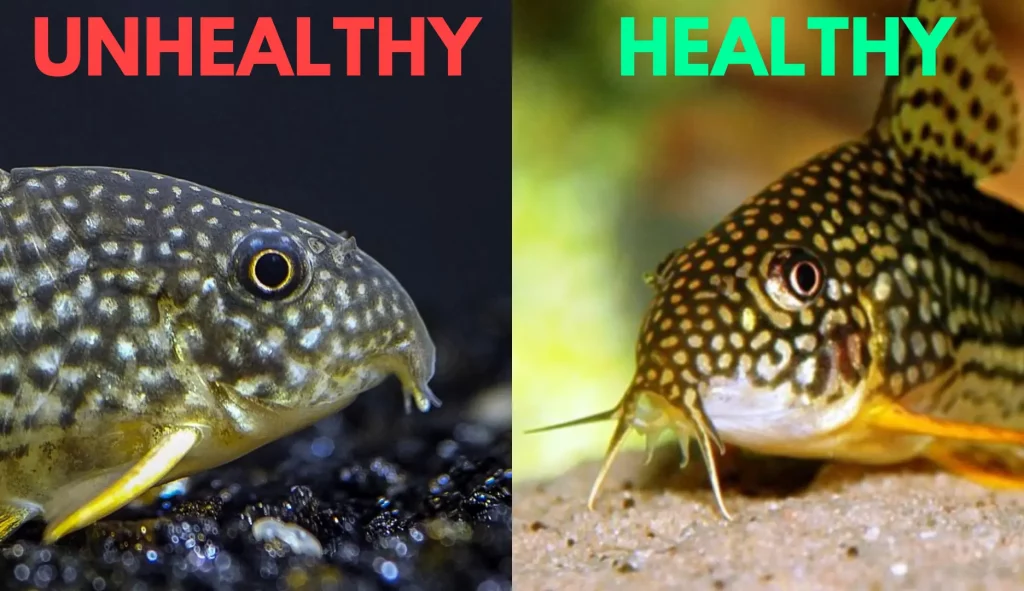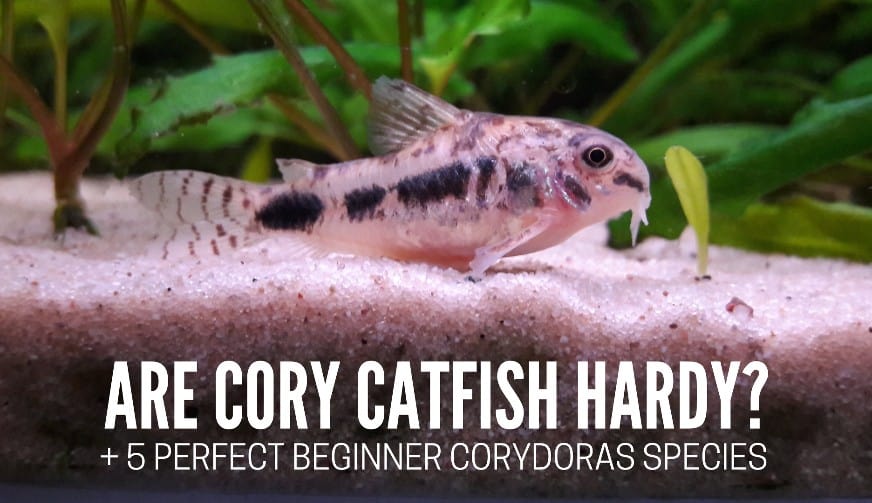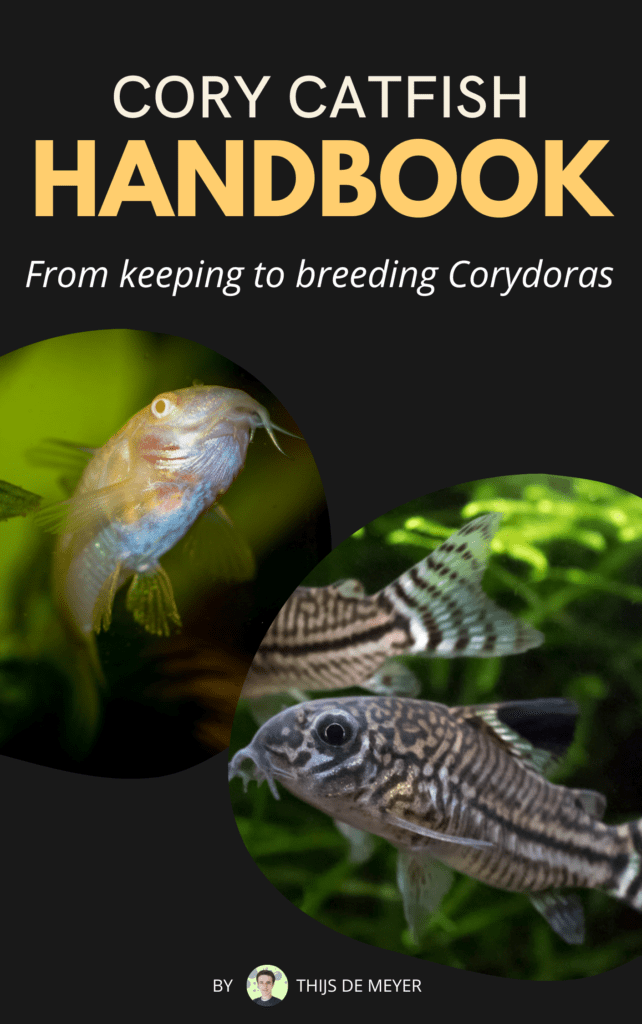If you have an aquarium with plecos and/or snails at home, you’ve probably wondered if plecos eat snails. After all, snails have hard shells and not every pleco is the same.
This article will explore whether plecos eat snails and what types of snails are suitable for feeding these fish.
Although not common behavior, some plecos can eat snails. Carnivorous and omnivorous plecos can eat small types of snails, such as pond snails or bladder snails. Snails can be fed to plecos by crushing them and optionally, boiling them to remove parasites.
The types of snails and whether they're safe with plecos

If you want to add snails to the pleco’s diet, you must choose the right type, as not all snails are healthy for fish.
On the other hand, if you want to keep snails with plecos, you should probably choose a snail that isn’t likely to get eaten by plecos.
Here are some types of snails that plecos can eat:
Bladder snails
Physa snails are a popular choice for feeding plecos. These snails are known for having smooth shells and a translucent appearance. They are a great source of protein and contain calcium, which is essential for fish health.
These snails are relatively small, typically reaching only around 1 inch in length. Due to their small size, they are more likely to be eaten by plecos than larger snails.
As for feeding, they can still be a great source of protein and calcium for plecos, especially younger ones who may be unable to consume larger prey.
It’s essential to monitor the number of Physa snails in the tank to ensure they do not become overpopulated and cause an imbalance in the ecosystem.
Nerite snails
Nerite snails are popular due to their interesting appearance and hardy nature.
They are known for their unique hard shell and a protective operculum that closes their shell opening; these features provide excellent protection against predatory plecos as it can withstand significant pressure and damage.
Nerite snails are difficult to breed in aquariums, with most individuals being collected from the wild. These factors make nerite snails a not-so-attractive addition to a pleco’s diet, as they are unlikely to be eaten naturally in an aquarium environment.
However, it is essential to note that larger carnivorous plecos may attempt to attack nerite snails, which can result in damage to both animals.
Although plecos usually do not eat these snails, in the case of larger carnivorous plecos it is recommended to monitor their behavior to avoid any damage to the snails.
Some aquarists crack the snail’s shell to offer it to plecos. However, this practice is not recommended, because in addition to the probable parasites and diseases that collected snails can bring, using wild animals as food is a practice considered unethical within the aquarium hobby.
Orange rabbit snail

Orange rabbit snails tolerate a wide range of water parameters including temperature, pH and hardness, making them an ideal choice for beginning aquarists.
They are known for their bright orange color and unique shape, reminiscent of a rabbit’s head. These snails are peaceful creatures, safe to keep with other fish and invertebrates.
This is a species of snail that is unlikely to be preyed upon by plecos. Orange Rabbit Snails have a hard shell that is typically brown or reddish-orange in color, and the size can vary depending on the species.
The shell is important to snails as it protects them from predators and provides a place for them to retreat when threatened. The operculum is a plate-like structure that seals the shell opening and provides extra protection to the snail.
As for their population in an aquarium, orange rabbit snails are generally slow breeders and will not overpopulate an aquarium on their own.
However, if they are overfed or if there are too many snails in the aquarium, this can lead to an increase in their population.
Even though snails are a great source of nutrients, not all of them are safe to feed to plecos.
Wild snails can carry parasites and diseases, which can be detrimental to the overall health of your aquarium, especially the fish.
This means that you must offer snails that you have bred yourself or bought from a reliable breeder or aquarium store.
Types of plecos and wheter they eat snails
Plecos are contained in a large and diverse group, with many fish with different characteristics, mainly in terms of food.
Not all species of plecos are carnivorous, and therefore not all feed on snails. Below is a list of species of plecos that are most likely to feed on snails.
Zebra pleco (Hypancistrus zebra)
Known for its voracious appetite for snails, zebra pleco is one of the most popular pleco species; it is a staple among pleco aficionados. This omnivorous fish has a strong tendency to be carnivorous.
Small and peaceful, it is native to a specific location in the Brazilian Amazon (Xingu River basin) and is often found in rivers with rocky bottoms and clear, rapid waters.
Bristlenose pleco (Ancistrus sp.)
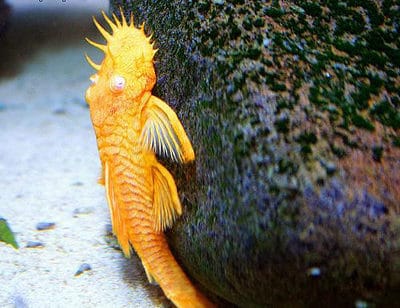
Also known as bristlenose plecos, Ancistrus species are sometimes considered as a herbivorous fish. However, it likes to occasionally nibble on some food of animal origin, such as mollusks and larvae.
It’s a prevalent fish throughout the Amazon region, especially along the Amazon River basin.
Clown pleco (Panaqolus maccus)
Commonly known as the clown pleco, the Panaqolus maccus is another species that feeds on snails. Native to the Orinoco River basin, this small, peaceful fish is known for its distinctive appearance, which includes a patterning of dark and light stripes.
Its base diet is wood, algae, and biofilm. In captivity, it benefits from supplementation with animal protein, such as snails.
Leopard frog pleco (Peckoltia compta)
Known as the leopard frog pleco, the Peckoltia compta is a fish native to the Tapajós River basin in the Brazilian Amazon. This pleco species is practically carnivorous.
It is known for its appetite for snails and its unique appearance, including a patterning of black spots on a white or yellow background.
Gold nugget pleco (Baryancistrus xanthellus)
Also known as the golden nugget pleco, the Baryancistrus xanthellus is another fish native to the Xingu river basin.
This species has an incredible feeding habit, feeding on practically anything at the bottom of the river or the rocks and driftwood, including snails, and other prey, such as worms and small crustaceans.
The gold nugget pleco gets larger than the other species we’ve discussed, making bigger snail species a possible prey.
Among the many pleco species known to feed on snails, these are just a few. It is worth mentioning that each species of pleco has its food preferences and that it is essential to provide a varied and balanced diet to maintain the health and well-being of these animals in the aquarium.
How to feed snails to plecos
Before starting, it’s crucial to mention that snails must be provided as a snack or food supplement and not as the primary source of food for these fish.
The idea is to feed the pleco a varied diet, using the species you have as a staple food, such as seaweed, pellets, or pellets for bottom fish.
If you want to use snails as food, remember to use mollusks from reliable, disease-free sources. Also, you must prepare the snails correctly before feeding them to the plecos.
One of the most common ways to prepare snails is to crush them slightly using a tool like a hammer or scissors. Thus, you break the shell, facilitating the ingestion of snails by the pleco. After crushing them, separate the snail meat from the shell, then feed the meaty part to the fish.
Another way to prepare the snails is to boil them before offering them to the plecos.
Besides making it easier to remove the meat from the shell, boiling it helps to remove any bacteria or parasites that may be present in the snails, making them safer to eat.
Ensure to provide the snails to the plecos immediately after preparation, and offer them in adequate amounts.
Excess snails in the pleco diet can lead to digestive problems in pleco fish, so you must feed them in small amounts and moderation, a maximum of 3 times a week as a snack.
Alternative fish that eat snails
Fish that feed on snails are a valuable addition to certain aquariums, especially if you have problems with snail overpopulation.
Several fish species are more effective at eating snails than plecos. Some of these fish are known to be very good at this; others may occasionally eat snails, not being as reliable at keeping the clam population in check.
Clown loach

The clown loach is a popular fish in freshwater aquariums due to its active behavior and colorful personality. They prefer slightly acidic to neutral water, with an average temperature between 24°C and 28°C.
These loaches are known to devour snails and their eggs, making them a popular option for controlling snail populations in aquariums.
Ensure to keep the fish in groups of at least five individuals to ensure they remain healthy and happy.
These fish don’t belong in small tanks, as they get huge.
Yoyo loach
The Yoyo loach is another very popular loach in home aquariums and is actively used to combat snail overpopulation.
These fish, like many other loaches, have an appetite for snails. It’s a peaceful species great for community aquariums.
Gourami
Gouramis are fish commonly kept in home aquariums, especially among beginners. Like other tropical fish, they live in acidic to neutral water, with an average temperature between 24°C and 28°C.
Although gouramis occasionally eat snails, they are not considered an effective option for controlling snail overpopulation in aquariums.
You must keep these fish in a well-filtered aquarium. The presence of decorations and plants is good for creating caves and hiding places that they enjoy.
Freshwater puffers
Freshwater puffers are a unique type of aquarium fish known for their ability to inflate their body into a ball when threatened. They prefer slightly alkaline to neutral water and a temperature of around 25-27°C.
These fish have teeth and a mouth specialized in eating snails and are perfect for helping to control the population of snails in the aquarium.
It’s vital to note that puffers require special care and are not a good choice for beginner aquarists.
They need a varied diet and often require live or frozen food for proper nutrition. Additionally, they need an aquarium large enough to accommodate their size and dietary needs.
Assassin snails
Assassin snails are a popular species among those aquarists who are having problems with overpopulation from other snail species in the aquarium.
Assassin snails are a natural way to control the snail population, as they are carnivorous mollusks that feed on other snails and their eggs.
Assassin snails are a well-suited species for beginners, as they are relatively easy to care for and are compatible with most aquarium fish species.
They prefer neutral to slightly alkaline water with an average temperature of between 23 and 28°C.
Because these snails are small and relatively peaceful, the species is suitable for smaller aquariums.
Although they reproduce slowly, they can cause overpopulation, so you should always manage the number of snails and eggs in the aquarium. These snails can easily multiply if there is an abundant food source; adjust their diet if necessary.
Conclusion
Some types of plecos are known to eat snails, although they will only occasionally. This includes most carnivorous and omnivorous pleco types like bristlenose and zebra plecos.
When considering keeping these fish in an aquarium, it is vital to carefully choose the fish that will live in the environment, regarding their compatibility and specific needs.
For snails, it is essential to maintain adequate nutrition and monitor the population to avoid overpopulation.

